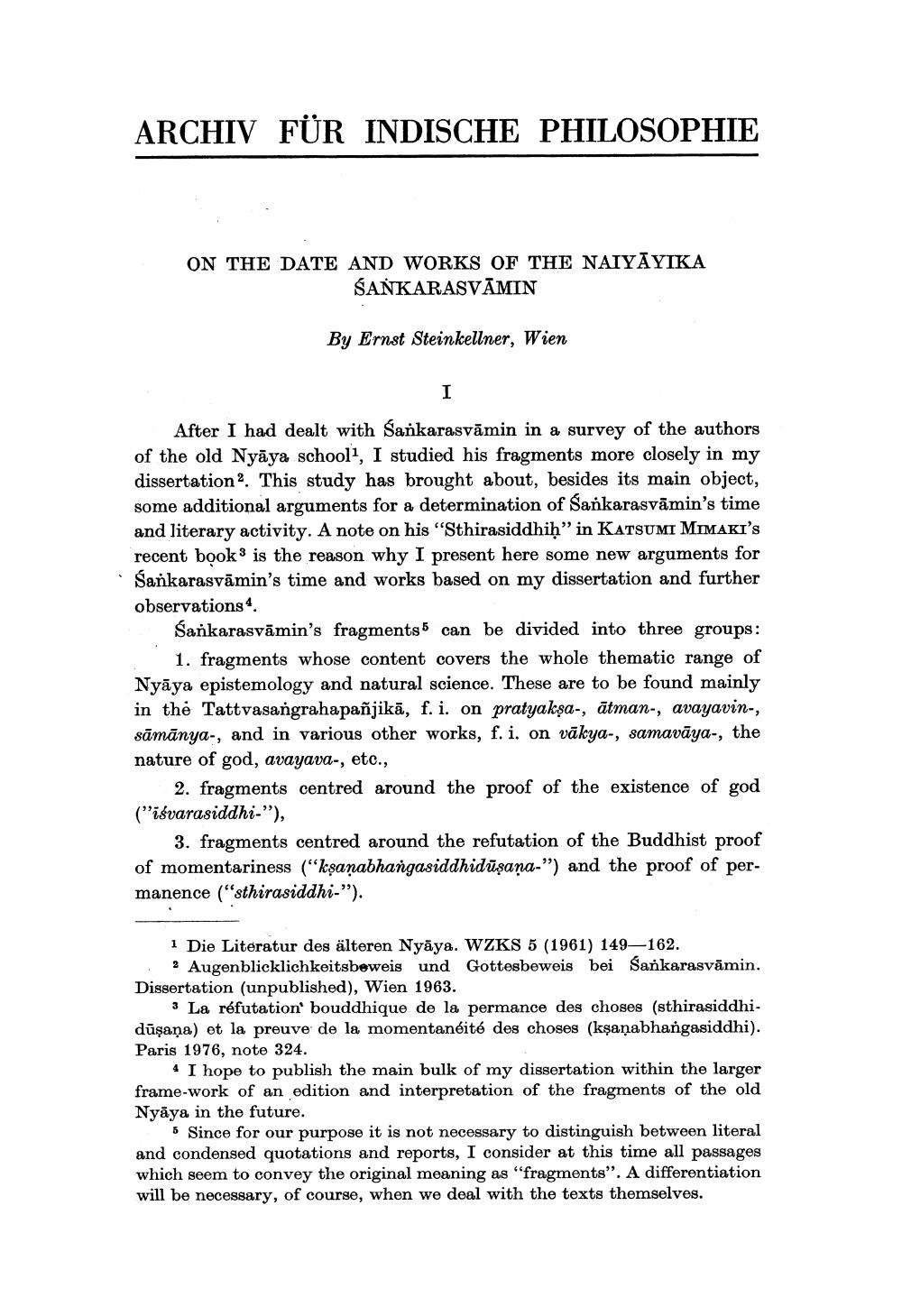Book Title: On Date And Works Of Naiyayika Sanskarasvamin Author(s): Ernst Steinkellner Publisher: Ernst Steinkellner View full book textPage 1
________________ ARCHIV FÜR INDISCHE PHILOSOPHIE ON THE DATE AND WORKS OF THE NAIYĀYIKA SANKARASVĀMIN By Ernst Steinkellner, Wien After I had dealt with Sankarasvāmin in a survey of the authors of the old Nyāya school?, I studied his fragments more closely in my dissertation. This study has brought about, besides its main object, some additional arguments for a determination of Sankarasvāmin's time and literary activity. A note on his "Sthirasiddhih" in KATSUMI MIMAKI'S recent books is the reason why I present here some new arguments for Sankarasvāmin's time and works based on my dissertation and further observations Sankarasvāmin's fragments 5 can be divided into three groups: 1. fragments whose content covers the whole thematic range of Nyāya epistemology and natural science. These are to be found mainly in the Tattvasangrahapañjikā, f. i. on pratyakşa-, ātman-, avayavin-, sāmānya-, and in various other works, f. i. on vākya-, samavāya-, the nature of god, avayava-, etc., 2. fragments centred around the proof of the existence of god ("iśvarasiddhi-"), 3. fragments centred around the refutation of the Buddhist proof of momentariness (“kşanabhangasiddhidūşana-”) and the proof of permanence ("sthirasiddhi-"). 1 Die Literatur des älteren Nyāya. WZKS 5 (1961) 149—162. :: Augenblicklichkeitsbeweis und Gottesbeweis bei Sankarasvāmin. Dissertation (unpublished), Wien 1963. 3 La réfutation' bouddhique de la permance des choses (sthirasiddhidūşaņa) et la preuve de la momentanéité des choses (kṣaṇabhangasiddhi). Paris 1976, note 324. - I hope to publish the main bulk of my dissertation within the larger frame-work of an edition and interpretation of the fragments of the old Nyāya in the future. 6 Since for our purpose it is not necessary to distinguish between literal and condensed quotations and reports, I consider at this time all passages which seem to convey the original meaning as "fragments". A differentiation will be necessary, of course, when we deal with the texts themselves.Page Navigation
1 2 3 4 5 6
